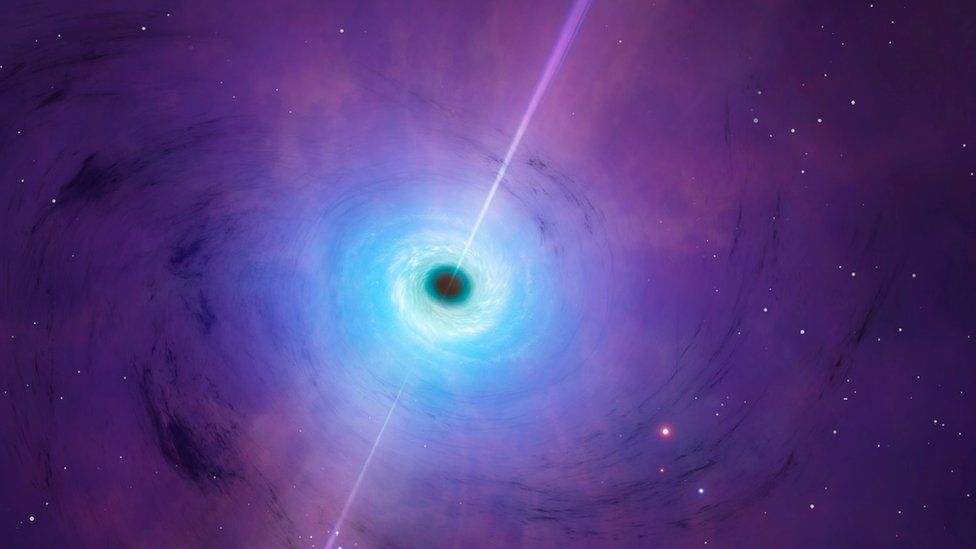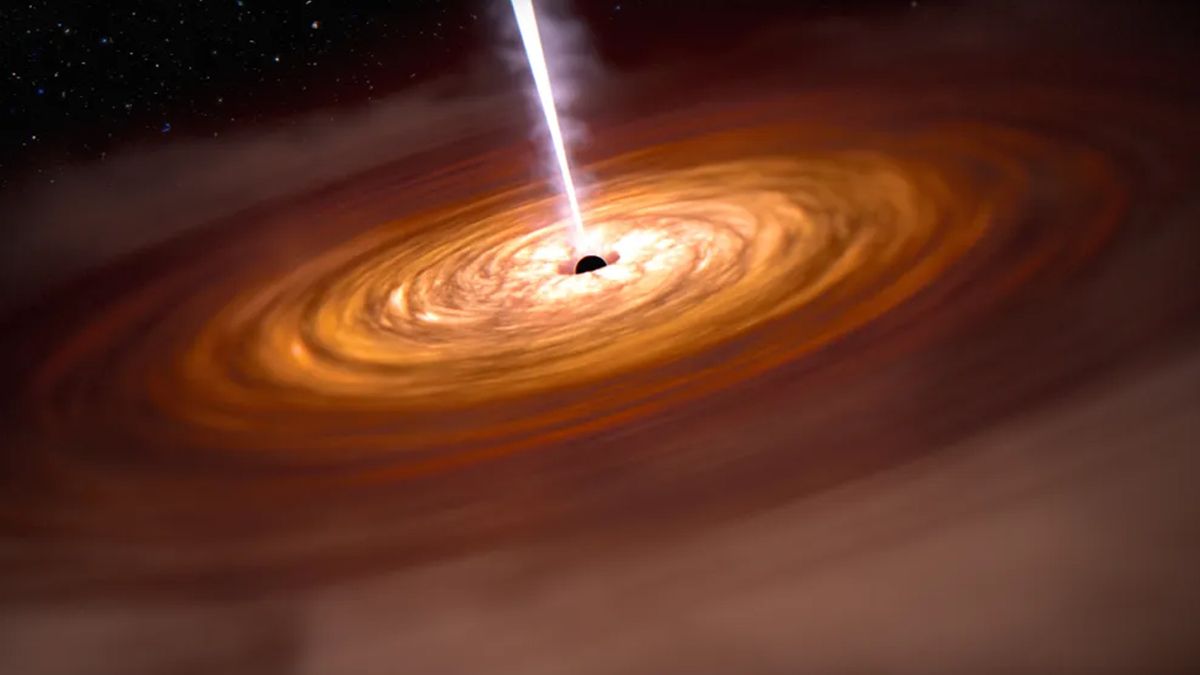Innovation
Oldest Black Hole Discovered Dating Back To 470 Million Years After The Big Bang

CAPE CANAVERAL, Fla. – Scientists have identified the world’s oldest black hole, a cosmic beast created only 470 million years after the Big Bang.
The findings, released on Monday, confirm previous predictions that supermassive black holes existed at the universe’s beginning. The observations were made by NASA’s James Webb Space Telescope and the Chandra X-Ray Observatory over a year.
Given that the cosmos is 13.7 billion years old, this black hole is 13.2 billion.
Even more startling to astronomers is that this black hole is a whopper – ten times larger than the hole in our Milky Way galaxy.
Oldest Black Hole Discovered Dating Back To 470 Million Years After The Big Bang
According to senior author Akos Bogdan of the Harvard-Smithsonian Centre for Astrophysics, it might weigh anywhere from 10% to 100% of the mass of all the stars in its galaxy. He noted that that is far from the tiny ratio of black holes in our Milky Way and other surrounding galaxies — an estimated 0.1%.
“It’s just really early in the universe to be such a behemoth,” said Priyamvada Natarajan of Yale University, who participated in the study published in Nature Astronomy. A companion piece was published in the Astrophysical Journal Letters. “It’s astounding how this thing actually is sitting in place already with its galaxy so early on in the universe.”
The hole is thought to have been created from massive clouds of gas collapsing in a galaxy adjacent to one with stars. The black hole gained control once the two galaxies joined.
The fact that Chandra identified it using X-rays shows “without a doubt that it is a black hole,” according to Natarajan. Using X-rays, “you’re actually capturing the gas that is being gravitationally pulled into the black hole, sped up and it starts glowing in the X-rays,” the scientist explained.
She said this is a quasar because it is actively developing, and the gas is brilliant.
According to scientists, the Webb telescope alone may have discovered a black hole 29 million years old, although it has yet to be viewed in X-rays and verified. Natarajan believes that more early black holes will be discovered – perhaps not as far out, but certainly fairly far away.
“We are expecting a new window to open in the universe, and I think this is the first crack,” she said.
The two space observatories, Webb and Chandra, magnified the region of space where this galaxy, UHZ1, and its black hole are located using a method known as gravitational lensing. The telescopes magnified UHZ1 and its black hole in the background using light from a much closer cluster of galaxies, only 3.2 billion light-years away from Earth.
“It’s a pretty faint object, and thanks to like luck, nature has magnified it for us,” said Natarajan.
Webb is the largest and most powerful astronomical observatory ever sent into space, launched in 2021 to a point 1 million miles (1.6 million km) away; it sees the universe in infrared. The considerably older Chandra spacecraft possesses X-ray vision and was launched into orbit in 1999.
“I absolutely find it amazing that Chandra can do such amazing discoveries 24 years after its launch,” Bogdan said in a statement.
A hole is a region in space where the gravitational pull is so strong that nothing, not even light, can escape from it. This phenomenon occurs when a massive star collapses at the end of its life cycle. The gravitational force of a black hole is incredibly powerful, and it distorts time and space around it.
As a result, holes are invisible and can only be detected by the effect they have on nearby objects. Despite their mysterious nature, black holes play a significant role in the study of astrophysics and the understanding of the universe.
SOURCE – (AP)
Business
Small, Well-Built Chinese EV Called The Seagull Poses A Big Threat To The US Auto Industry
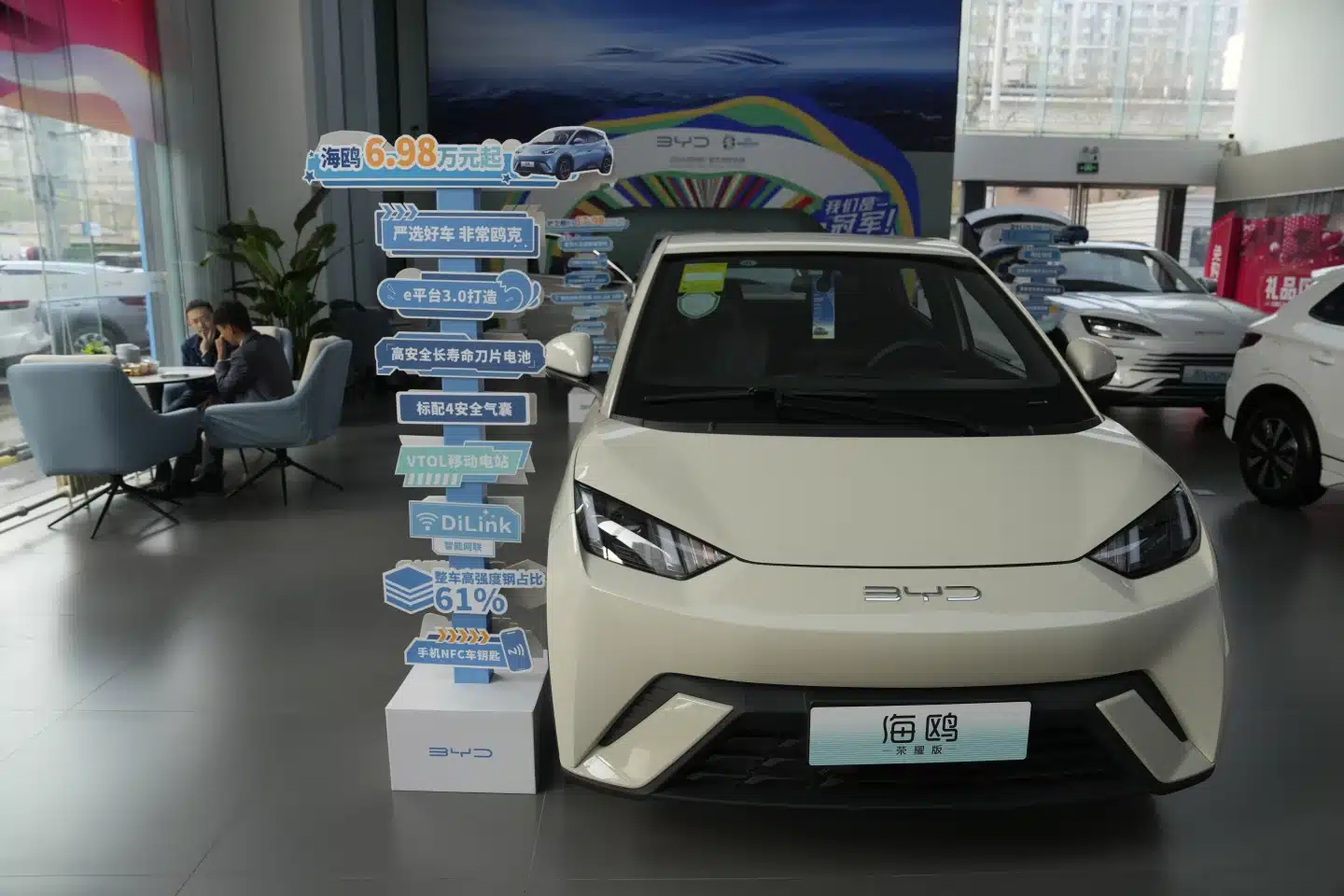
Livonia, Michigan —The Seagull, a small, low-cost electric automobile, has American automakers and politicians concerned.
The vehicle, which Chinese automaker BYD unveiled last year, costs about $12,000 in China, but it drives smoothly and has a level of craftsmanship that is comparable to three times more expensive electric vehicles made in the United States. A shorter-range version costs less than $10,000.
Tariffs on imported Chinese vehicles are expected to keep the Seagull away from American shores for the time being, and if imported, it will most certainly cost more than $12,000.

PixBay – VOR News Image
Small, Well-Built Chinese EV Called The Seagull Poses A Big Threat To The US Auto Industry
However, the quick introduction of low-cost EVs from China has the potential to shake up the global auto industry in ways not seen since Japanese manufacturers erupted onto the scene during the 1970s oil crisis. BYD, which stands for “Build Your Dreams,” could be disastrous for the US auto industry.
“Any car company that isn’t paying attention to them as a competitor will be lost when they enter their market,” said Sam Fiorani, vice president of AutoForecast Solutions near Philadelphia. “BYD’s entry into the US market is not a question. “It’s a when.”
Politicians and businesses in the United States already perceive Chinese EVs as a potential threat. On Tuesday, the Biden administration will likely impose 100% tariffs on imported electric vehicles from China, citing a threat to American jobs and security.
According to a study by the Alliance for American Manufacturing, government subsidies for Chinese electric vehicles “could end up being an extinction-level event for the U.S. auto sector.”
Earlier this year, Tesla CEO Elon Musk warned industry analysts that Chinese EVs are so good that, without trade obstacles, “they will pretty much demolish most other car companies in the world.”
Outside China, EVs are often expensive, catering to a higher-income niche market. However, Chinese businesses that still need to be worldwide household names are providing affordable solutions that appeal to the masses, just as the United States, Europe, and many other nations are pushing a shift away from gasoline-powered vehicles to combat climate change.
“The Western markets have not democratized EVs. “They gentrified EVs,” said Bill Russo, founder of Shanghai-based consultancy Automobility Ltd. “And gentrification limits the market size. China is all about democratizing electric vehicles, ultimately leading Chinese companies to success as they expand globally.”Inside a massive garage in an industrial location west of Detroit, Caresoft Global disassembled and reassembled a bright green Seagull purchased in China and delivered to the United States.
Company President Terry Woychowski, a former chief engineer on General Motors’ large pickup trucks, described the car as a “clarion call” for the United States auto industry, years behind China in developing low-cost EVs.
Following the breakdown, Woychowski, who has been in the car industry for 45 years, expressed concern about whether American automakers can adapt. “Things will have to change in some radical ways in order to be able to compete,” he stated.
There is no single miracle that explains how BYD can produce the Seagull so cheaply. Instead, Woychowski described the complete vehicle, which can travel 252 miles (405 kilometers) on each charge, as “an exercise in efficiency.”
Higher labor costs in the United States are one factor to consider. BYD can keep costs down due to its competence in manufacturing lithium iron phosphate batteries, which are primarily used in consumer products. They are less expensive but have a shorter range than most modern lithium-ion batteries.
Woychowski explained that Americans are still discovering how to build cheaper batteries. Ford is constructing a lithium iron phosphate battery facility using technology from China’s CATL.
BYD manufactures several parts, such as electric motors, dashboards, bodywork, and headlights. It also has the advantage of massive size, with 3 million vehicles sold worldwide last year.
“By having that all in-house and vertically integrated, there’s an incredible advantage that they have,” Woychowski stated.
BYD designs all of its cars with cost and efficiency in mind. For example, the Seagull has only one windshield wiper, eliminating one motor and one arm, saving weight, money, and labor during installation.
According to Woychowski, automakers in the United States rarely design automobiles in this manner, resulting in higher engineering expenses. Hoses, for example, must meet long-standing combustion engine standards for strength and the capacity to convey fluid under high pressure, many of which are unnecessary in electric vehicles.

PixaBay – VOR News Image
Small, Well-Built Chinese EV Called The Seagull Poses A Big Threat To The US Auto Industry
The weight reductions accumulate, allowing the Seagull to travel further per charge with a smaller battery. For example, the Seagull that Caresoft tested weighs 2,734 pounds (1,240 kilograms), around 900 pounds less than a Chevrolet Bolt, GM’s slightly larger electric vehicle.
To stay up, Detroit must swiftly re-learn a lot of design and engineering while discarding traditions developed over a century of vehicle production. He said the problem will be deciding which procedures to preserve for safety and quality and which to eliminate because they are unnecessary.
“You’re going to have to come and be extremely serious about this, and you better park your paradigms at the door,” Woychowski stated. “Because you’re going to have to do things differently.”
Despite its simple form, the Seagull exudes quality. The doors close solidly. The gray synthetic leather seats include stitching that matches the body color, a characteristic often found in more costly vehicles. The Seagull “Flying Edition” reviewed by Caresoft includes six airbags, rear disc brakes, and electronic stability control.
A reporter’s brief drive around connected parking lots revealed that it runs quietly and can manage bends and bumps like more expensive electric vehicles.
While the acceleration isn’t as impressive as other EVs, the Seagull is quick and would easily enter a freeway in heavy traffic. Woychowski claims the top speed is limited to 81 mph (130 km/h).
BYD would have to adapt its vehicles to meet US safety regulations, which are more strict than those in China. Woychowski says Caresoft still needs to do crash tests, but he estimates that doing so would cost $2,000 more for the Seagull.
BYD sells the Seagull, renamed the Dolphin Mini in some overseas markets, for almost $21,000 in four Latin American nations, more than twice the price here. The greater price includes transportation costs but also reflects the potential for bigger profits in less competitive markets than China.
In Europe, BYD sells larger models like the Seal, which starts at 46,990 euros ($50,000) in France. According to the China Passenger Car Association, the Chinese manufacturer’s top two overseas markets in the first two months of this year were Thailand and Brazil.
BYD manufactures electric buses in California and told the Associated Press last year that it is “still in the process” of determining whether to sell automobiles in the United States. Two firm executives stated in media interviews earlier this year that it is considering sites for production in Mexico, but only for the Mexican market.

Pixabay – VOR News Image
Small, Well-Built Chinese EV Called The Seagull Poses A Big Threat To The US Auto Industry
The company does not sell cars in the United States, owing mostly to 27.5% tariffs on Chinese vehicle sales when they arrive at ports. When Donald Trump was president, he imposed the majority of the tariff, 25%, which remained in place under Joe Biden. Trump claims that Biden’s push for electric vehicles will kill American manufacturing jobs, transferring the work to China.
The Biden administration has supported legislation and policies to establish a US EV manufacturing base, and it has not ruled out additional tariffs to keep the Chinese out. The administration is also looking into cars built in China that could collect sensitive information.
Some members of Congress are asking Biden to prohibit imports of Chinese vehicles, while others have proposed even higher duties. This includes vehicles manufactured in Mexico by Chinese businesses, which would now be imported essentially tariff-free.
Ford CEO Jim Farley has seen Caresoft’s work on the Seagull and seen BYD’s quick growth worldwide, particularly in Europe, where he previously ran Ford’s business. He’s planning to change his company. He told analysts earlier this year that a small “skunkworks” team is developing a new, small EV from the bottom up to keep prices low and quality high.
According to Farley, Chinese manufacturers sold essentially no EVs in Europe two years ago but now account for 10% of the electric vehicle industry. They may export around the world and possibly sell in the United States.
SOURCE – (AP)
Innovation
NASA Astronauts Arrive For Boeing’s First Human Spaceflight
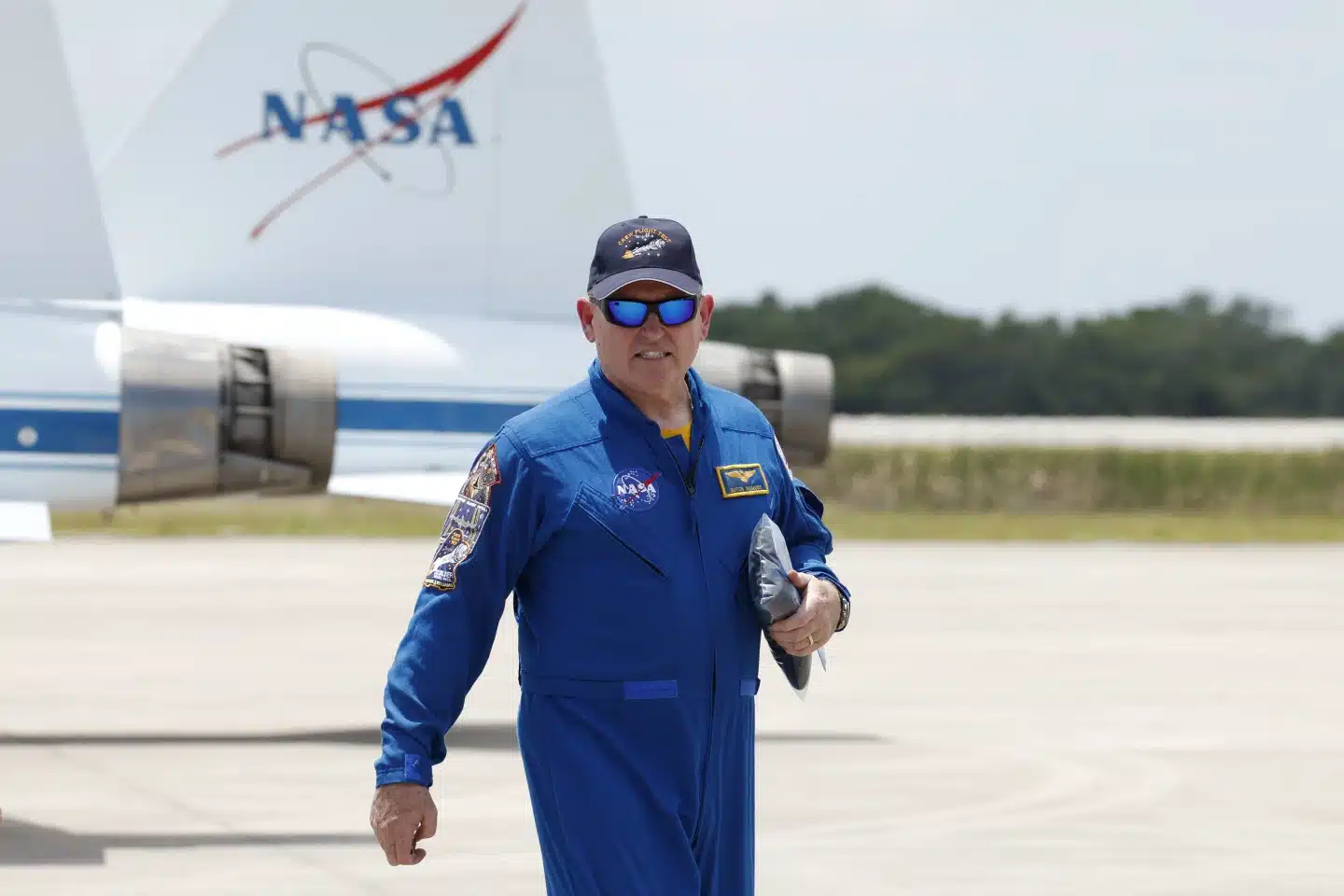
The location is Cape Canaveral, Florida. On Thursday, the two NASA astronauts designated for Boeing’s inaugural manned space mission arrived at the launch site approximately one week before their planned departure.
Butch Wilmore and Suni Williams have been selected as test pilots for Boeing’s Starliner capsule, marking its inaugural crewed mission following significant delays. On Thursday, they traveled by air from Houston to Kennedy Space Center.
AP – VOR News Image
NASA Astronauts Arrive For Boeing’s First Human Spaceflight
Scheduled for launch on May 6 using an Atlas rocket, the Starliner spacecraft will go to the International Space Station for a week-long test mission. Boeing is endeavoring to close the gap with SpaceX, which has been conducting manned space missions for NASA since 2020.
Boeing’s two earlier Starliner test flights were unmanned. The initial launch in 2019 was unsuccessful in reaching the space station due to software malfunctions and other technical issues. Boeing replicated the demonstration in 2022. In more recent times, the capsule encountered problems with its parachutes and had to address the issue of flammable tape that needed to be eliminated.
Wilmore emphasized that this is a test flight intended to uncover any anomalies.
AP – VOR News Image
NASA Astronauts Arrive For Boeing’s First Human Spaceflight
Do we anticipate flawless execution? “This is the inaugural manned voyage of the spacecraft,” he informed the press. “I am confident that we will discover information.” This is the reason why we engage in this activity.
NASA enlisted the services of SpaceX and Boeing ten years ago, allocating billions of dollars to facilitate the transportation of personnel to and from the space station. Despite the space station’s planned closure by 2030, the space agency remains enthusiastic about procuring capsules from two rival businesses to transport its astronauts.
“That is of utmost importance,” Wilmore remarked.
AP – VOR News Image
NASA Astronauts Arrive For Boeing’s First Human Spaceflight
Wilmore and Williams are set to become the inaugural astronauts to embark aboard an Atlas rocket since NASA’s Project Mercury in the early 1960s.
SOURCE – (AP)
World
China Launches 3-Member Crew To Its Space Station As It Seeks To Put Astronauts On The Moon By 2030
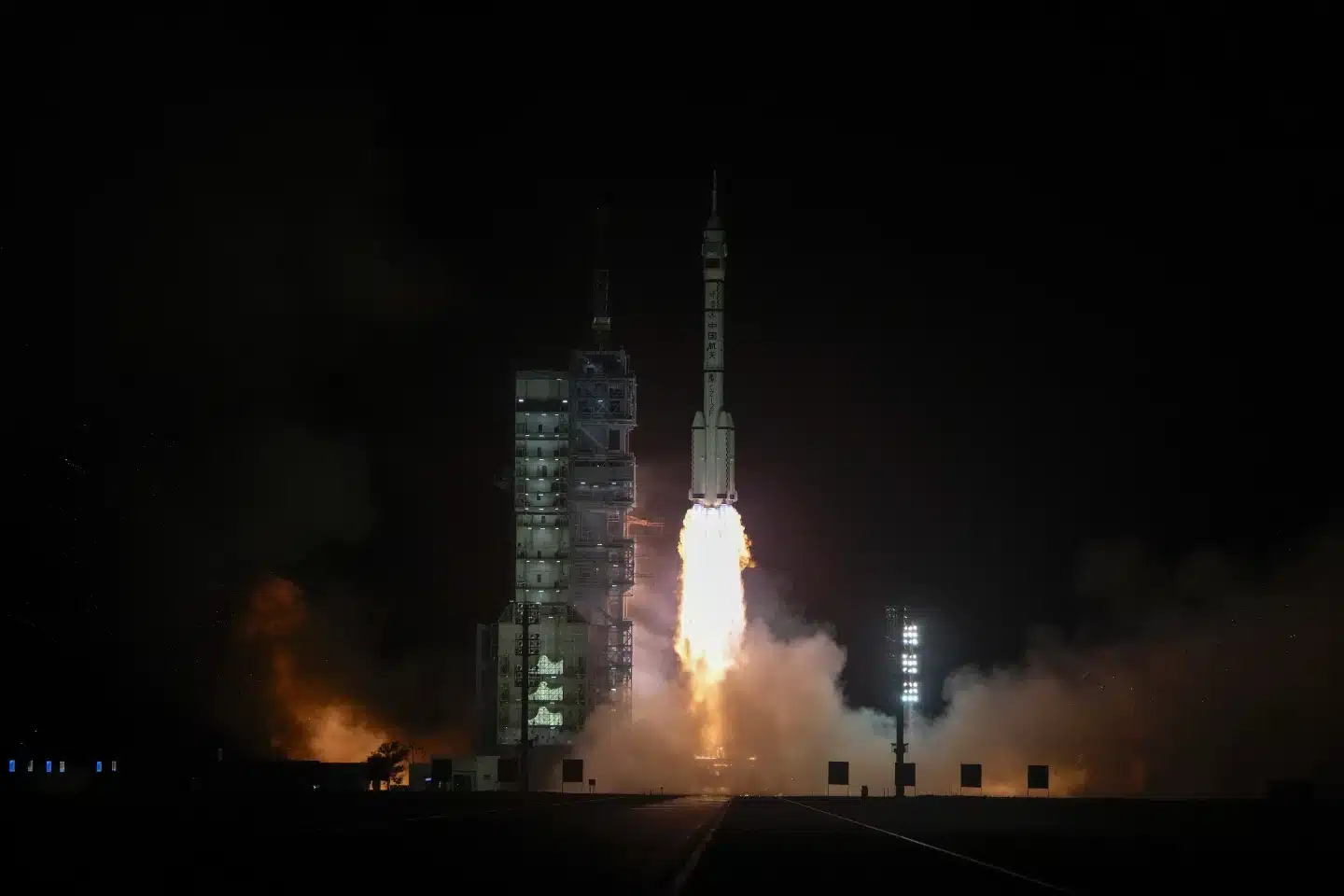
The location is Jiuquan Satellite Launch Center in China. On Thursday, China successfully deployed a three-member crew to its orbiting space station as part of its ambitious initiative to send astronauts to the moon by 2030.
The Shenzhou-18 spacecraft launched from the Jiuquan Satellite Launch Center, located on the periphery of the Gobi Desert in northern China. It was propelled by a Long March 2-F rocket at precisely 8:59 p.m. (1259 GMT).
AP – VOR News Image
China Launches 3-Member Crew To Its Space Station As It Seeks To Put Astronauts On The Moon By 2030
The spacecraft’s three-member crew will replace the Shenzhou-17 team, which has been working aboard China’s Tiangong space station since October last year.
The China Manned Space Agency (CMSA) organized a send-off ceremony for the Shenzhou-18 crew on Thursday. The ceremony included flag-waving youngsters and patriotic music. The three astronauts were getting ready to board the spacecraft.
The trio consists of Commander Ye Guangfu, a seasoned astronaut who participated in the Shenzhou-13 mission in 2021, and two novice spaceflight pilots, Li Cong and Li Guangsu, who are 34 and 36 years old.
Their arrival at the space station is anticipated approximately six-and-a-half hours after the launch.
China constructed its own space station after being denied participation in the International Space Station, primarily due to the United States’ apprehensions regarding the Chinese military’s role in the project. For the current year, the Chinese space station has planned two missions for cargo ships and two for manned spaceflights.
AP – VOR News Image
China Launches 3-Member Crew To Its Space Station As It Seeks To Put Astronauts On The Moon By 2030
The Shenzhou-18 mission will last approximately six months on the space station. According to Lin Xiqiang, deputy director of the CMSA, the crew will conduct scientific testing, install equipment to protect against space debris, undertake payload experiments, and promote science education, among other activities.
In addition, Lin stated that China is actively striving to eventually grant foreign astronauts and space tourists access to its space station.
“During a press conference on Wednesday, he stated that we will expedite the research and promotion of involving foreign astronauts and space tourists in flights on China’s space station.”
The nation is strategizing a mission to retrieve samples from Mars by approximately 2030, along with three lunar probe missions in the upcoming four years. Additionally, it aims to deploy astronauts on the moon by 2030.
In 2003, China successfully carried out its inaugural crewed space mission, making it the third nation, following the former Soviet Union and the United States, to independently send an astronaut into space.
AP – VOR News Image
China Launches 3-Member Crew To Its Space Station As It Seeks To Put Astronauts On The Moon By 2030
Due to its expenditures, supply networks, and capabilities, the U.S. space program will likely maintain a substantial advantage over China’s. Nevertheless, China has made significant advancements in space exploration by successfully retrieving lunar samples after several decades and landing a rover on the relatively unexplored far side of the moon.
The United States has set a goal to return a crew to the moon’s surface by the conclusion of 2025 due to a renewed dedication to manned missions. Private companies like SpaceX and Blue Origin will support this endeavor.
SOURCE – (AP)
-
Sports5 months ago
Saints’ Aggressive Play-Calling Ends Up Coming Back To Hurt Them In Loss To Rams
-
Business5 months ago
Nike Says It Will Cut $2 Billion In Costs In A Major Warning For Consumers
-
Business5 months ago
Federal Court Revives Lawsuit Against Nirvana Over 1991 ‘Nevermind’ Naked Baby Album Cover
-
News5 months ago
The Rise of Woke Ideology in Western Culture
-
Business5 months ago
Wayfair CEO: Employees Need To Work Longer Hours, After Laying Off 5% Off The Company
-
Learning5 days ago
Exploring TVA Nouvelles Quebec’s Premier News Source

